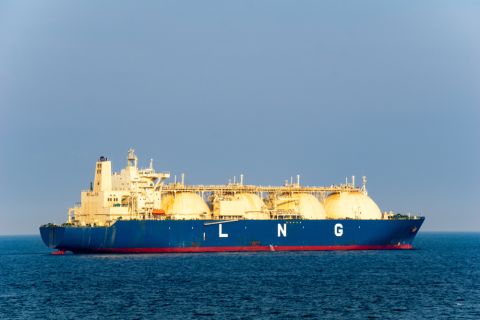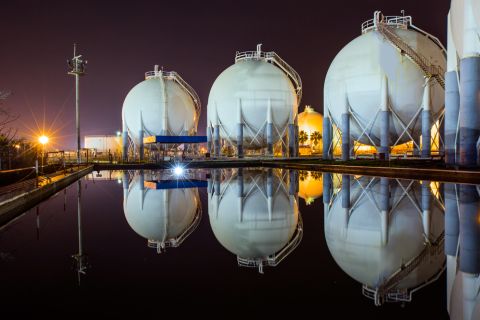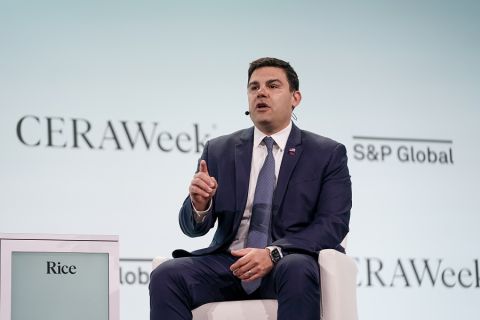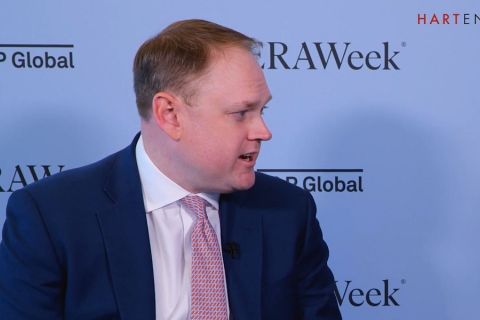Gas-industry maverick Paul Rady, chairman and chief executive of Denver-based Antero Resources Corp., doesn't claim to have a fool-proof plan for his future success, but his track record of attracting private equity and launching upstream start-ups that thrive speaks for itself. Since 2001, he's created and sold two for a total of more than $1.5 billion. Colleagues say his knowledge of geology and photographic mind have served him well. After leaving Barrett Resources as president and CEO in 1998, he set his sights on forming Pennaco Energy Inc., which he led with Glen Warren as executive vice president and chief financial officer. Together, the pair transformed Pennaco from a small acreage-holder in the Powder River Basin coalbed-methane play to a company with net production of more than 50 million cubic feet per day and nearly 200 billion cubic feet (Bcf) of proved reserves. After it was acquired by Marathon Oil in 2001 for a cool $500 million, Rady and Warren and other Pennaco senior managers launched Antero. In 2003 the newest start-up secured a commitment of $260 million from management and the powerhouse financial trio of Warburg Pincus, Yorktown Energy Partners and Lehman Brothers Merchant Banking. With plenty of cash on hand, management focused on the Barnett Shale in North Texas in February 2003, snapping up select gas-producing potential in the Newark East Field for $50 million. It continued to grow its lease position, gathering a total of approximately 60,000 net acres in Wise, Tarrant, Parker and Johnson counties. Meanwhile, Fort Worth-based XTO Energy Inc. began putting together a Barnett Shale position of its own. This spring, it grabbed up Antero's holdings in a deal valued at some $900 million that includes XTO stock. Antero had amassed proved reserves of 440 Bcf of gas, 41% proved developed and 100% operated, and potentially 400- to 500 Bcf of additional gas reserves. Production totaled 60 million cubic feet per day. Antero will continue to operate the Barnett assets through June and management has agreed to a non-compete in the shale play for two to three years. While the non-compete means moving on to the next big play, Rady isn't worried. He remains connected to the Antero team and committed to a business model of not getting too big. Investor How did you become interested in the Barnett Shale? Rady At Barrett Resources, Pennaco and Antero, we liked unconventional resource plays: tight sands, coalbed-methane (CBM), fractured shale and refrac plays like what Patina Oil & Gas has done in the Wattenburg Field in the Denver-Julesburg Basin. Those are the big four. We went looking for a project that had big enough targets, where we could drill for a Bcf per well at least. We didn't want to go minnow-chasing for those 250-million-cubic-foot-type targets. We wanted repeatability and we wanted to be able to use our technical creativity with what we know about fracs, horizontal drilling and microseismic technology. We looked around and spotted the Barnett. Of course, this was four years after it was already going. We came a little late to the party-we were busy with Pennaco and other things-but fortunately we didn't come too late. We got there in time to analyze and buy acreage, and so it worked out pretty well. Investor What were your sources of funding? Rady We went the private-equity route. We had an arrangement for approximately $260 million. Our lead investors were Warburg Pincus, Yorktown Energy Partners and Lehman Brothers. We did our first capital call in February 2003 to buy certain properties and from there we were off and running. As we built our reserve base, we put together a credit line with a group of seven banks led by US Bank and Bank One, now JP Morgan. As our reserves grew we kept boosting our credit line. Investor Who were your partners? Rady We have Glen Warren, president and chief financial officer; Terry Dobkins, vice president of production; Brian Kuhn, vice president of land; Steven Woodward, vice president of business development; Bryan Hassler, vice president of gas marketing and transportation; and Robert Mueller, who's our chief geologist. We have common experience and we were together at Pennaco, Barrett and Amoco. Investor Why exit now? Rady Well, part of our business model is to not get too big. We definitely saw a lot of running room in the Barnett. We have a great reputation in the Fort Worth area and there were a lot of other opportunities. But we decided to test the market and put ourselves up for sale, and in the end we got a good price. Investor Was it always the plan, to flip it this soon? Rady (chuckling) I'm not sure we had a plan that specifically said two years, but when you feel that the time could be right with good prices and good opportunities, and buyers are interested, it just felt right and it was an instinct sort of thing. Investor What did you like about XTO's offer? Rady We have a lot of admiration for XTO. It's the reason we took stock as part of the consideration. We're believers in the company and its approach, and it was a pleasure to turn the properties over to them because we think they'll do a great job with them. Investor Are there parts of the Barnett that didn't work out for you? Rady I think mostly everything we did worked out, but where it didn't, what we saw in hindsight using 3-D seismic was, as everyone knows, that there were faults and fractures, collapsed features under the Barnett that give rise to water coming in. Those were our bad wells, and they were virtually all in a certain part of Tarrant County. Investor Would you look at the Barnett again at the expiration of the non-compete? Rady It kind of depends on what we're doing in three years. It's a huge play and there's a lot to be done, so it's possible. But I'll say going back isn't likely. The great thing about the oil and gas business is there's always a new opportunity, and I imagine that we'll find one and move on to that. We probably won't look back. Investor Are you planning to start again? Rady Our same group continues to work, not missing a beat, and we're early on in building new projects. We'll start drilling them this July after we turn the Barnett project over to XTO. We'll continue to be known as Antero, since we kept the name. Investor Will you bring in outside money again? Rady Well actually, we haven't used that much of our equity commitment. We still have $100 million or more of private-equity commitments that we haven't used so far, so we still have plenty of firepower with the existing arrangement. Investor What is your outlook for North American gas and oil prices? Rady It's human nature to think that things in the future are going to be about what they are today. I think things in general will be positive, but I see increasing difficulty in putting together big drilling inventories. More and more areas are either drilled up or off limits even as demand keeps rising, but I am an optimist. Investor So is energy still the business to be in? Rady Absolutely. We've put in our 20 years of ups and downs and hard times. This really is our Golden Age and I hope it never ends. Investor So what's next? Rady (chuckling) I don't know. We have a small property in East Texas, with one rig drilling near Tyler. In the future we may look into the possibility of expanding over that way. Investor What do you recommend to founders of other start-ups? Rady I would say that if you can just do the blocking and tackling, and actually finding oil and gas-and mostly gas-at reasonable finding costs, then that's the way to go. Seven-dollar gas makes mere mortals look like geniuses.
Recommended Reading
Watson: Implications of LNG Pause
2024-03-07 - Critical questions remain for LNG on the heels of the Biden administration's pause on LNG export permits to non-Free Trade Agreement countries.
US Asks Venture Global LNG to Justify Filing of Confidential Documents
2024-03-13 - The FERC request comes days after Venture Global LNG customers had challenged the company's request for a one-year extension of its startup and urged the regulator to make Venture Global release the confidential commissioning documents.
Belcher: Our Leaders Should Embrace, Not Vilify, Certified Natural Gas
2024-03-18 - Recognition gained through gas certification verified by third-party auditors has led natural gas producers and midstream companies to voluntarily comply and often exceed compliance with regulatory requirements, including the EPA methane rule.
EQT’s Toby Rice: US NatGas is a Global ‘Decarbonizing Force’
2024-03-21 - The shale revolution has unlocked an amazing resource but it is far from reaching full potential as a lot more opportunities exist, EQT Corp. President and CEO Toby Rice said in a plenary session during CERAWeek by S&P Global.
Exclusive: The Politics, Realities and Benefits of Natural Gas
2024-04-19 - Replacing just 5% of coal-fired power plants with U.S. LNG — even at average methane and greenhouse-gas emissions intensity — could reduce energy sector emissions by 30% globally, says Chris Treanor, PAGE Coalition executive director.




